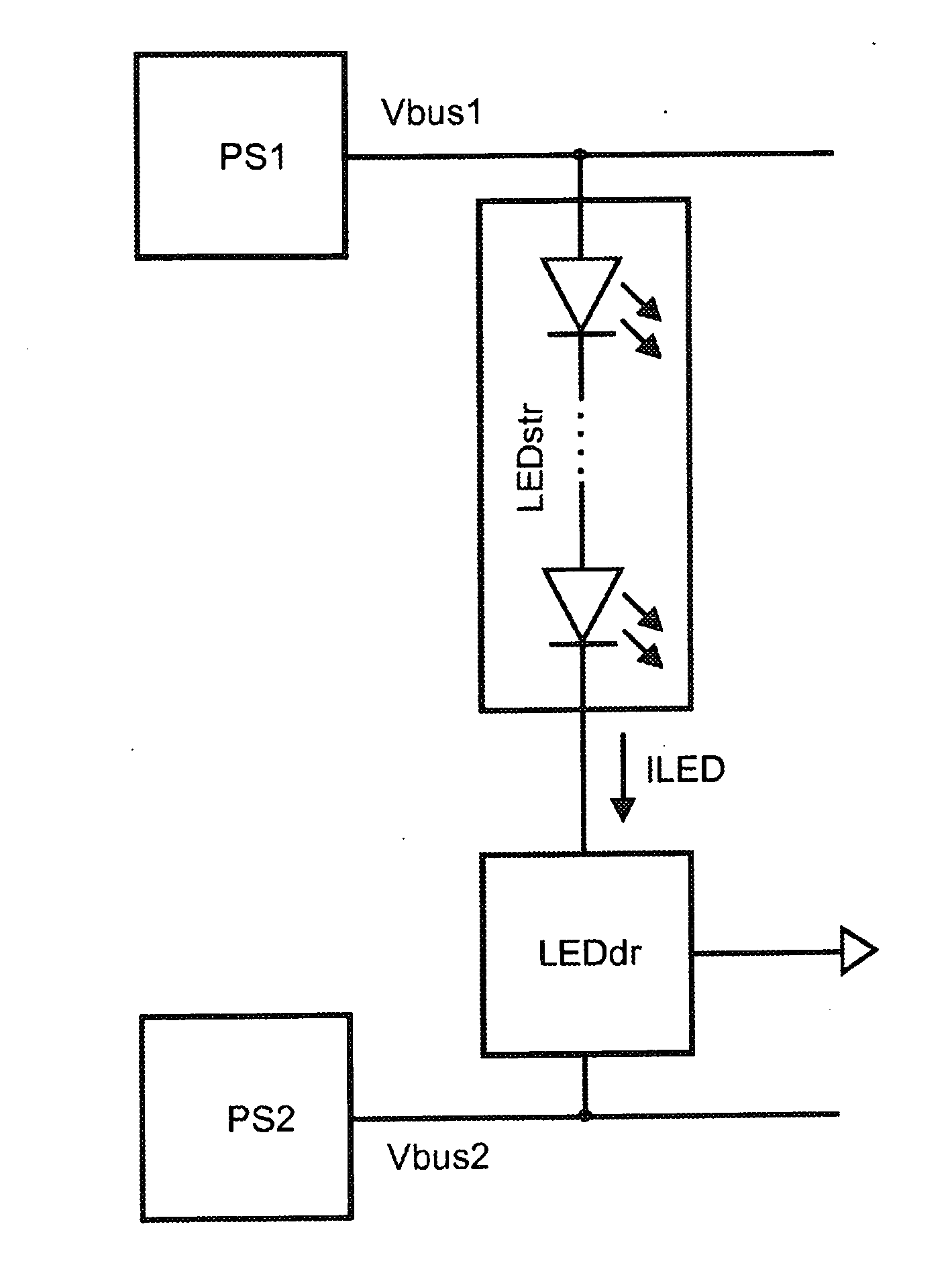Solid state lighting system and a driver integrated circuit for driving light emitting semiconductor devices
- Summary
- Abstract
- Description
- Claims
- Application Information
AI Technical Summary
Benefits of technology
Problems solved by technology
Method used
Image
Examples
first embodiment
[0037]FIG. 5 shows a simplified block diagram of an electronic system, in particular a solid state lighting system, according to the present invention. The solid state lighting system comprises a first and second power supply PS1, PS2 for providing a first and second supply voltage Vbus1, Vbus2. The block LEDdr may have a third terminal involved with the power distribution, here indicated as ground, that carries the current ILED during part of the time. The lighting system furthermore comprises a string of light emitting diodes LEDstr and a driver circuit LEDdr for driving the string of LEDs. Accordingly, the first and second power supplies PS1, PS2 are coupled to the string of light emitting diodes LEDstr. The two power supplies PS1, PS2 provide two potential Vbus1 and Vbus2, and they may be of any type, linear, inductive, or capacitive switch mode, battery, solar cell, fuel cell, etc., or, they even may share parts in common with the LEDdr circuitry. If the power supplies and the ...
second embodiment
[0038]FIG. 6 shows a simplified schematic of the invention. A power supply PS is provided which is used to obtain a first supply voltage Vbus1. A plurality of strings of LEDs is coupled to the first supply voltage Vbus1. In series with each string of LEDs, an inductor L and a switch T (which can be implemented as a transistor) is provided. In addition to the first supply voltage Vbus1, a second supply voltage Vbus2 is provided. A diode D is coupled between the inductor and the second supply voltage Vbus2.
[0039]It should be noted that each driving unit or each string of LEDs comprises an associated transistor T, inductor L and a fly-back diode D. Thus, the driver unit constitutes a three terminal unit. As an illustrative example, the voltage of the first supply voltage Vbus1 corresponds to 300V and the voltage across the strings of LEDs corresponds to VLED chain=173V−237V. Therefore, the second supply voltage Vbus2 must be >127V, as the difference between the first and second supply ...
third embodiment
[0042]According to the second and third embodiment, a driving unit with three supply terminals can be provided in which all three currents from the LED are flowing.
PUM
 Login to View More
Login to View More Abstract
Description
Claims
Application Information
 Login to View More
Login to View More - R&D
- Intellectual Property
- Life Sciences
- Materials
- Tech Scout
- Unparalleled Data Quality
- Higher Quality Content
- 60% Fewer Hallucinations
Browse by: Latest US Patents, China's latest patents, Technical Efficacy Thesaurus, Application Domain, Technology Topic, Popular Technical Reports.
© 2025 PatSnap. All rights reserved.Legal|Privacy policy|Modern Slavery Act Transparency Statement|Sitemap|About US| Contact US: help@patsnap.com



